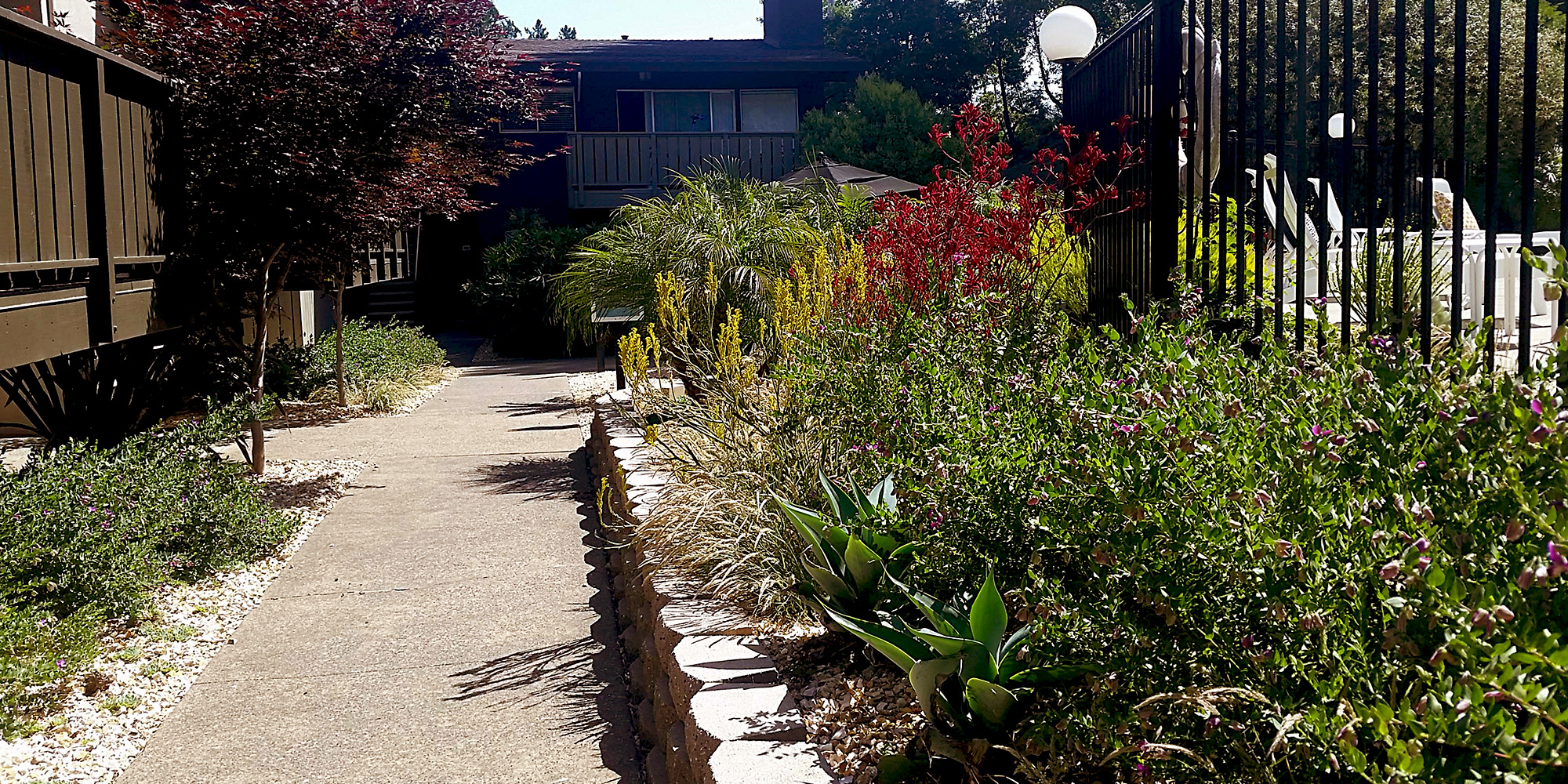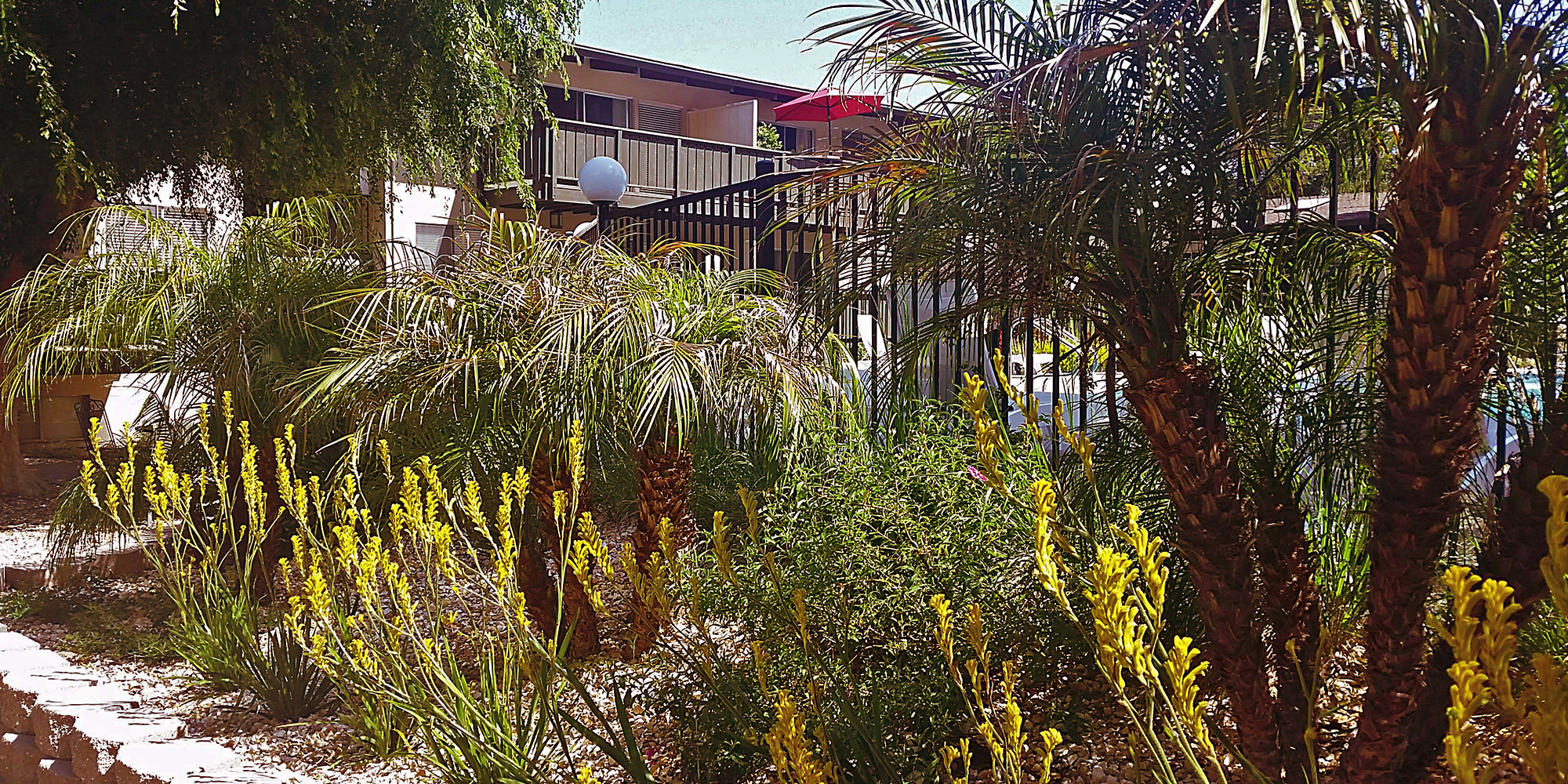Project Description
A water saving makeover for a tired 1960’s landscape was desired by the new owners of this apartment complex. Fortunately, one of their friends was a former residential client, who recommended us highly. When we first saw it, the property was more compacted dirt than plants. The challenge was to transform the common areas and planting beds to an inviting landscape that is water-conserving, colorful and has a variety of textures and vegetation types, but with a limited budget.
Several micro-climates exist on the property, from deep shade under redwood trees, to hot and sunny around the swimming pool. We used many native plants, sub-tropicals, drought-hardy plants from the southern hemisphere, and succulents. We placed the plants appropriately for these micro-climates, and, in combination with some of the existing larger, appropriate plants, such as the redwoods, Japanese maples, and dwarf palm trees, form a lush but water saving environment. The existing ground cover of coarse gravel remains in the warmer areas, accentuating the plants, creating easier maintenance, and at the same time, storing heat which helps the sub-tropical and succulent plants thrive. In one particular area of poor drainage, we solved the problem by using larger river-washed cobble stones combine with native sedges that can absorb a great deal of water in the winter, but can thrive on very little water in the summer.
The outcome of this project resulted in a win for all parties involved. The owners achieved the water saving and image makeover that they desired. The residents enjoy an upgraded, eco-conscious environment, with the added benefits of increased bird life, butterfly attendance, and knowing that the landscape is appropriate for their environment.
Landscape Contractor: Sampson Landscaping











